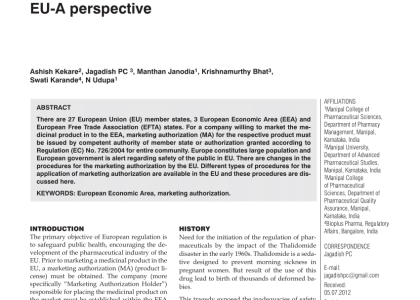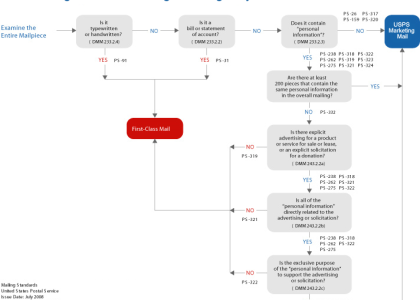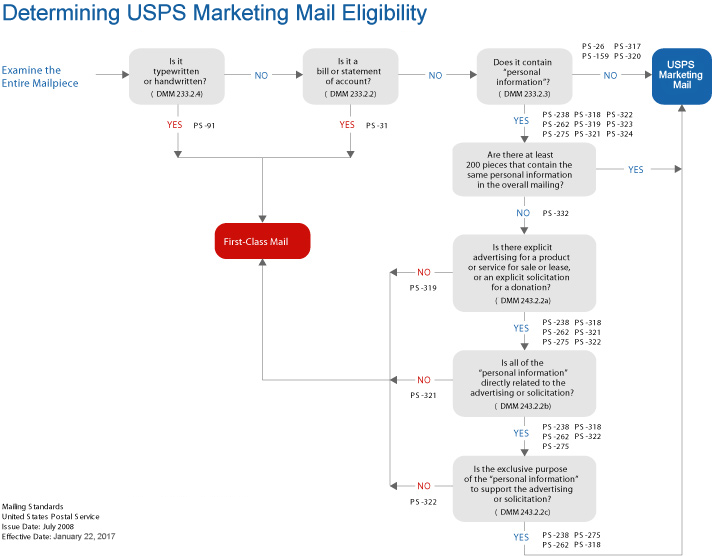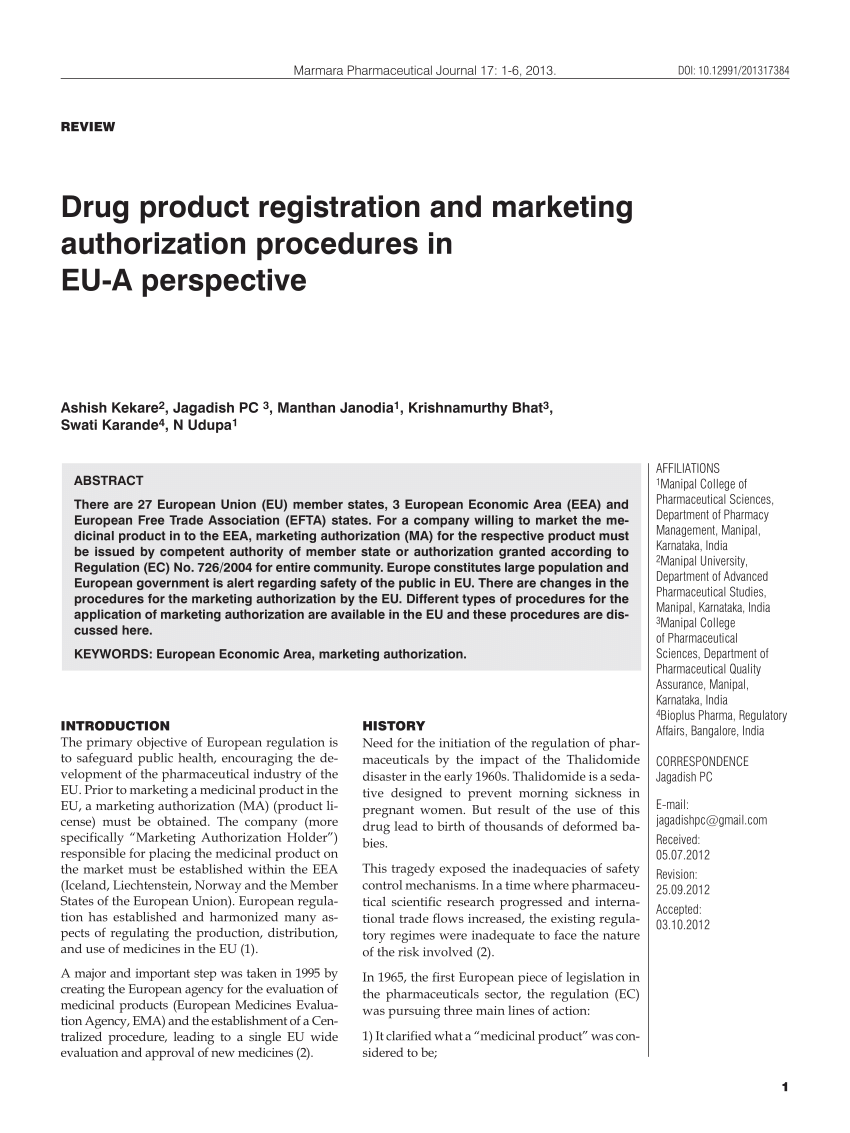In the rapidly evolving world of affiliate marketing, understanding key metrics is imperative to success. One such significant indicator is EPC, or Earnings Per Click. This crucial figure provides valuable insight into the profitability of your affiliate programs, effectively serving as a benchmark to gauge the efficiency of your marketing strategies.
Despite its importance, EPC often remains an overlooked or misunderstood term among beginners in the affiliate marketing arena. Thus, it’s essential to thoroughly comprehend this concept to utilize it effectively and maximize profit in your affiliate marketing business.
This guide is designed as an in-depth exploration into the essence of EPC in affiliate marketing. Our aim is to break the concept down into easily digestible sections, aiding beginners and veterans alike in understanding how applying EPC can elevate their marketing strategies. Analyzing EPC can enable marketers to streamline their efforts, invest in lucrative marketing channels, and ultimately improve their return on investment (ROI).
The realms of affiliate marketing, with all their complexity, can be navigated with ease and proficiency once you have a firm grasp on these critical metrics such as EPC. Let’s dive deep into its intricacies, decipher its functionality, and comprehend its pivotal role in driving your affiliate marketing success.
Understanding the Significance of EPC in the Sphere of Affiliate Marketing
In the world of affiliate marketing, deciphering the jargon can often feel like learning a whole new language. One such critical term you need to comprehend is EPC, an acronym for Earnings Per Click. The EPC is a metric affiliate networks and programs utilize to showcase the average earnings affiliates can expect to generate per click.
EPC is often seen as an indicator of an affiliate program’s profitability. It helps marketers to forecast the outcome of their promotional efforts by showing how much revenue they can potentially get from their campaigns. Understanding this concept is vital for affiliate marketers because it influences their decision-making process when selecting offers to promote and determining their advertising strategies.
A higher EPC value often signifies a more profitable affiliate program. Still, it’s essential to consider other factors like the conversion rate and the volume of traffic to your campaigns. Therefore, you shouldn’t rely solely on EPC when making decisions but understand it within the broader context of your overall performance metrics.
So, how is EPC calculated? In simple terms, EPC is computed by dividing the total earnings generated through an affiliate link by the total number of clicks that link received. It is usually averaged over a certain period (like seven days or 30 days) and expressed as a dollar amount.
- A high EPC rate could mean that the affiliate program or product you’re promoting is very lucrative and converting well.
- Alternatively, a low EPC might suggest that the program or product isn’t converting well, or that the commission rate isn’t sufficient.
While understanding EPC is beneficial, it’s equally important to remember that it’s just one aspect of a broader, comprehensive strategy. The key to becoming a successful affiliate marketer lies in continuously monitoring, evaluating, and adapting your overall affiliate marketing strategies.
The Crucial Role of EPC in the Realm of Affiliate Marketing
In the realm of affiliate marketing, the earnings per click (EPC) metric holds considerable significance. This metric encompasses the average revenue an affiliate receives each time a potential customer clicks on their affiliate link. Thus, it’s a key performance indicator that affiliates closely monitor and optimize to enhance their profitability.
The relevance of EPC lies in its ability to reflect the profitability of an affiliate program. This figure allows marketers to gauge the viability of promoting a certain product or service based on the anticipated earnings from each click. Therefore, affiliates lean toward programs with higher EPCs, as these generally imply a greater return on their marketing efforts.
Moreover, EPC assists in the evaluation of marketing strategies. By comparing the EPC values before and after implementing a certain strategy, affiliates can assess its effectiveness. A substantial increase in EPC might indicate that the strategy is working well, while a decrease suggests the opposite.
- Quality Traffic: In an attempt to enhance EPC, some affiliates focus on attracting high-quality traffic – visitors who are inclined to make purchases. This strategy often translates into higher conversion rates and thus, superior EPC values.
- Highly Relevant Offers: Affiliates can also aim to promote offers that resonate with their audience’s interests and needs. This can lead to better engagement and conversion rates, consequently improving EPC.
- Effective Landing Page: The landing page to which the affiliate link leads plays a pivotal role in conversion rates. Affiliates can optimize these pages to be more engaging and persuasive, thereby bolstering EPC.
In conclusion, understanding and optimizing EPC is crucial for affiliates in maximizing their revenue. This metric not only indicates how lucrative a program could be, but it also provides insight on the effectiveness of marketing strategies. By focusing on quality traffic, highly relevant offers, and effective landing pages, affiliates can work towards enhancing their EPC and, in turn, their profitability.
Calculating EPC in the Context of Affiliate Marketing
Understanding the calculation of the Earnings Per Click (EPC) while involved in affiliate marketing can determine the effectiveness of an affiliate program. Essentially, the EPC indicates the average earnings generated through each click instigated through your affiliate marketing efforts.
Deciphering the Calculation Process of EPC
Computing the EPC involves dividing the total earnings from an affiliate program by the total number of clicks generated during the same period. It paints a picture of how well an affiliate marketing campaign is doing by showing you exactly what you gain for each click driven to the advertiser’s website.
Let us break it down. Say, for instance, that your total earnings from an affiliate marketing program are $10,000, and the total number of clicks that were driven to the advertiser’s site is 5,000. By dividing the total earnings ($10,000) by the total number of clicks (5,000), we get an EPC of $2.
This means that, on average, you make $2 for every click you generate. This is a crucial metric when evaluating the profitability of different affiliate programs and can assist you in deciding where to focus your marketing efforts.
Note: EPC is typically calculated over a specified period – often 7 or 30 days. This time factor aids in trend identification and can offer useful insights into the stability of earnings from the affiliate program.
- Collect data: Gather the total earnings from the affiliate program and the total number of clicks generated within the specified period.
- Divide total earnings by total clicks: This results in the average earnings per click.
Please keep in mind that high EPC does not necessarily equal high profits if the cost per click (CPC) or other campaign expenses are also high. It’s essential to consider all aspects of your affiliate marketing campaign while evaluating its profitability.
Comprehending the Correlation between User Clicks and Earnings per Click in Affiliate Marketing
Participating in affiliate marketing programs usually involves an understanding of various important metrics. Two such prime metrics include user clicks and Earnings per Click (EPC). To optimize your profit potential in this realm, an understanding of their correlation can prove beneficial.
Insights into User Clicks and EPC
In essence, user clicks refer to the number of times potential customers click on the posted affiliate links or advertisements. These clicks usually lead to the advertiser’s website and are critical in driving conversions.
On the other hand, Earnings per Click (EPC) is a standard measure of the profit or earning potential of a particular affiliate program. It is calculated by dividing the total earnings from an affiliate program by the total number of clicks received.
Therefore, the fundamental correlation between user clicks and EPC lies in their direct proportional relationship. This means that if your EPC is high and you’re receiving a good amount of clicks, you’ll earn a significant amount from your affiliate program. Conversely, inadequate clicks or a low EPC can negatively affect your income.
Strategies for Improving User Clicks and EPC:
- Optimizing your affiliate content and links: Producing relevant and high-quality content can compel your audience to click on your affiliate links.
- Choose lucrative affiliate programs: Not all affiliate programs have the same profit potential. It’s critical to choose ones that offer high EPC.
- Utilize effective marketing strategies: Improving your marketing techniques can help in driving more traffic, and hence, clicks.
The understanding of user clicks and EPC relationship in affiliate marketing is intrinsic to optimize any affiliate program. Remember, more targeted user clicks can ideally equate to a higher EPC, thus driving up your affiliate earnings.
Understanding the Contrast Between Average and Actual Earnings Per Click in the Affiliate Marketing World
In the realm of affiliate marketing, tracking and understanding financial measurements is essential for success. Two of these key metrics are Average Earnings Per Click (EPC) and Actual EPC. Although they seem similar, there are significant differences between them.
On one hand, Average EPC refers to the mean earning generated each time a user clicks on an affiliate link. It helps marketers predict potential revenues from future campaigns. This figure is computed by adding up all the earnings generated from clicks over a certain period, then dividing it by the total number of clicks during that same period. Cautiously, it should be noted that this is merely a statistical estimation and not a definite assurance of earnings on individual clicks.
By contrast, Actual EPC is not a projection but the actual profit acquired from each click. It is calculated by dividing the total commission earned by the total number of clicks. This metric is usually lower than average EPC, as it accounts for all clicks, including those that did not lead to any conversion or sale.
While both metrics provide valuable insights into the financial performance of affiliate campaigns, they serve different purposes. Average EPC is an effective tool in estimating the potential profitability of a campaign. On the other hand, Actual EPC is vital for accurately analysing the outcome of a campaign and identifying areas for optimization.
The disparities between Average EPC and Actual EPC highlight the need to consider both figures when formulating an affiliate marketing strategy. Balancing these insights enables marketers to create more effective campaigns and foster sustainable profitability.
Effective Strategies to Amplify your Earnings Per Click in Affiliate Marketing Tactics
Improving your earnings per click (EPC) is an essential aspect of affiliate marketing and can often prove the difference between a struggling campaign and a successful one. Here are several proven techniques that you can use to achieve this.
Promote High-Quality Products
Choosing high-quality products relevant to your audience not only increases trust among consumers but also leads to higher conversion rates, thus improving the overall EPC. It’s essential to note that quality doesn’t always mean high-priced goods. Instead, go for products that deliver high value to your customer base and align with the content of your website or blog.
Optimize Advertising Creatives
Evaluating and optimizing your marketing creative aspects regularly can have a significant impact on your EPC. You might consider testing different images, color schemes, or copywriting approaches to determine which ones resonate the most with your audience. A well-targeted, enticing ad can drastically boost engagement and click-through rates.
Implement Deep Linking
Deep linking refers to the strategy of linking directly to specific product pages rather than leading consumers to generic pages. This strategy helps consumers to find precisely what they’re interested in, significantly increasing the likelihood of a subsequent purchase.
Consider Pay-Per-Sale Programs
It might be advantageous to consider pay-per-sale or cost-per-action programs as opposed to more traditional pay-per-click programs. While these programs might require more effort and time, the potential payout per successful referral is generally higher, thus potentially leading to a better EPC.
To conclude, EPC is a valuable metric to gauge the overall efficacy of an affiliate marketing strategy; hence, it’s vital to continually reassess and optimize your approach to ensure it’s maximizing returns.
Elements Influence Earnings Per Click in Association Promotion
The profitability of equipment related to publicizing actions can be significantly influenced by a variety of underlying factors. Understanding these can help create effective strategies to increase earnings per click (EPC). Here are some factors that can substantially impact EPC in affiliate marketing operations.
Quality of Traffic
A crucial determinant of EPC is the quality of the traffic that the affiliate sends to the advertiser’s site. High-quality traffic means visitors are interested in the advertiser’s products and are more likely to make a purchase, leading to a higher EPC. Conversely, if the traffic consists mostly of casual browsers with low intent to buy, the EPC will be lower.
The relevancy of Products
A strong correlation exists between the relevance of the products being promoted and the EPC. If the products or services do not align with the interests or needs of the target audience, the likelihood of getting conversions (purchases) and hence, a meaningful EPC, is significantly reduced.
Site Design and User Experience
Website design and user experience often play a pivotal role in EPC. A poorly designed website or one with a complex navigation structure could deter potential customers, diminishing the chances of them making a purchase and negatively impacting the EPC.
Country of Traffic
The country from where the traffic originates can also affect EPC. Some regions may have a higher purchasing power than others, meaning marketers targeting these areas may realize higher EPC. Additionally, certain products or services might resonate more with consumers in specific regions, affecting the EPC in the process.
Effectively managing these factors can lead to improvement in earnings per click in affiliate marketing endeavors. By optimizing each element, affiliates can aim to achieve a higher return on their marketing efforts.
Selecting Affiliate Marketing Schemes on Account of ECP
As an affiliate marketer, one has to make a wise choice while selecting an affiliate program. One crucial factor that must not be overlooked is the Earnings Per Click (EPC). The EPC is a representation of the average earnings generated for every 100 clicks. It is a crucial metric that helps affiliates to judge the profitability of a program.
EPC is an essential factor because it tells the Affiliate Marketer how much they can potentially earn for each click they send to the advertiser’s website. The Affiliate Marketer can then consider the competition and the amount of traffic they can drive to decide which Affiliate Programs to join.
Steps to select the affiliate program based on EPC
- Understanding the Metric: Before you start choosing, it’s essential to understand what EPC is and why its value matters. The higher the EPC, the better the program performs and yields a return.
- Compare the EPC Values: Looking at the EPC value of different programs and comparing them can give an indicator of which program may give better returns.
- Analyze the Average EPC: A point to note is that the EPC value displayed is usually an average. Therefore, it is possible that you may earn more or less than this.
- Choosing quality over quantity: A higher EPC value doesn’t necessarily mean that it’s the best program to choose. It’s essential to look at the quality of the product you’re promoting too.
- Testing: After selecting some programs based on their EPC, Affiliate Marketers can experiment with them to determine which program yields a higher return.
In summary, while selecting an affiliate program based on EPC can help identify potential earnings, it is important to consider other factors too. Factors such as the product’s quality, market competition, and the support from the merchant should also be evaluated before deciding on the best affiliate program.
An Examination of EPC and Other Crucial Metrics in the Sphere of Affiliate Advertising
The world of affiliate marketing is governed by a variety of performance indicators, one of which is the earnings per click (EPC). This critical metric gives advertisers a comprehensive overview of their affiliate campaign’s profitability. Measured over a certain period, EPC reflects the average revenue generated for every click on an affiliate link. Thus, by monitoring EPC, affiliates can determine the effectiveness of their campaigns and perform necessary adjustments to their strategies.
Besides EPC, several other important metrics play a central role in affiliate marketing. The following are some of the most notable ones:
- Click-through rate (CTR): This metric gives affiliates an insight into the number of users that clicked on their affiliate links compared to the total number of users who saw the advert. A high CTR often hints at a compelling ad that effectively elicits user interaction.
- Conversion rate (CVR): CVR tells affiliates about the percentage of users who not only clicked the affiliate link but also completed the desired action (like buying a product or subscribing to a service). This metric is crucial for understanding how successfully an affiliate campaign leads to conversions.
- Return on investment (ROI): This is an essential metric for any marketing campaign, including affiliate marketing. It calculates the profit made from an affiliate program relative to its overall cost. A high ROI means that the affiliate marketing strategy has been effective in generating profit.
- Cost per action (CPA): CPA is a beneficial metric for advertisers because it only calculates the cost for actual conversions, rather than just clicks or impressions. It’s a preferred method for businesses seeking hard results.
In conclusion, to be successful in affiliate marketing, understanding and tracking these metrics is of paramount importance. EPC and other indicators like CTR, CVR, ROI, and CPA collectively provide the holistic picture of an affiliate campaign’s performance and guide marketers to make data-driven strategic decisions.
Typical Errors While Evaluating Earnings Per Click in Partner Marketing
When it comes to affiliate marketing, a critical concept that is often used to evaluate potential profitability is Earnings Per Click (EPC). However, many marketers often make some common mistakes when analyzing EPC, which can lead to inaccurate conclusions and less-than-ideal marketing strategies.
Overlooking External Factors
One of the most common oversights is failing to consider external elements that can impact on the EPC. Factors like seasonal trends, market competition, and changes in consumer behavior can significantly influence the EPC. Not incorporating these factors can lead to an unrealistic assessment of the potential profitability of an affiliate campaign.
Reliance on Single Metric
Another prevalent mistake is heavy reliance on EPC as the sole metric for assessing an affiliate program’s success. While an essential indicator, EPC should not be used in isolation. Other critical indicators like conversion rates, average order value, and return on investment also come into play when evaluating the overall performance of an affiliate campaign. Therefore, having a holistic view can provide a more accurate assessment.
Generalizing Earnings
Moreover, there is also a tendency to generalize EPC values across various affiliate programs and traffic sources. EPC can vary significantly based on the specific characteristics of each program, such as the target audience, product type, and marketing strategies employed. Assuming a high EPC for one program would automatically translate to the same level of earnings for another can lead to faulty marketing decisions.
Understanding the complexities and inherent limitations of EPC is essential for an effective affiliate marketing strategy. Avoiding these common mistakes can help marketers craft more profitable campaigns and make the best use of their resources.
How EPC can Forecast the Success of Affiliate Promotions
Earnings Per Click (EPC) holds a significant position in the sphere of affiliate marketing. It doesn’t merely quantify immediate financial results; it can also project the future success or failure of affiliate campaigns. Knowledge of EPC is crucial as it equips affiliate marketers with the perspective they need to optimize their strategies and ultimately maximize profit and growth.
The act of examining EPCs can be likened to peering into a crystal ball that lets marketers see the potential profitability of the advertising campaigns they affiliate themselves with. The higher the EPC, the more likely the marketing efforts will yield a positive return on investment (ROI). It provides marketers with a simplified and quantifiable standard for measuring campaign effectiveness from a revenue standpoint.
The Significance of EPC in Evaluating Campaigns
EPC is instrumental in predicting campaign viability before marketers even stake their resources. Affiliate marketers can leverage this statistic to evaluate the profitability of various affiliate programs. A high EPC typically indicates that the product or service sells well and the linked advertising campaign is effective. Conversely, a low EPC might signal that it’s time to reconsider the campaign strategy or look for better alternatives.
Besides, a thorough analysis of EPC trends over time allows predicting the sustainability of a campaign’s success. If an affiliate program consistently maintains high EPCs, it’s likely to continue performing well. However, significant fluctuations in EPC might indicate instability and should be regarded as a red flag.
- Consistent EPCs: Assure continuous solid performance.
- Fluctuating EPCs: Warn about potential campaign instability.
In conclusion, EPC serves an indispensable function in predicting future triumph in affiliate marketing. Both in terms of immediate profitability and long-term stability, the importance of understanding and interpreting EPC cannot be underestimated. By effectively using EPC as a predictive tool, affiliates can secure a more profitable and promising future in the digital marketing world.
A Closer Look at High-Performance EPC Strategies in Affiliate Marketing
Understanding successful models in affiliate marketing, particularly those associated with high earnings per click (EPC), can provide insightful ideas to help boost your marketing initiatives. By exploring practical examples involving superior EPC methods, you will be equipped with both theoretical knowledge and real-life applications beneficial for marketing growth.
John’s Luxury Fashion Blog: John, a luxury fashion blogger, has used an EPC-based approach in his affiliate marketing endeavors. He chose high-end fashion brands known for a high EPC rate as his affiliated companies. Consistently, he shared relevant content and direct links to the products in a compelling and personalized manner. This strategy led to engagement growth, ultimately increasing his EPC and overall commissions.
NutriFit, Fitness & Health Website: NutriFit is a recognized fitness and nutritional advice website that successfully implements high EPC strategies into their affiliate marketing. The site only associated with brands whose products align with their health ethos and have a proven high EPC rate. This tactic, combined with well-structured and targeted posts, motivated their audience to click more on their affiliate links. As a result, their EPC remained consistently high, and they were able to generate steady income.
These examples underline some essential elements behind EPC success:
- Choose affiliated companies wisely, considering their EPC rate.
- Share content that is consistent with both your audience preference and the product you’re promoting.
- Encourage your audience to click more on your affiliate links by providing persuasive and personalised content.
By applying these principles, affiliate marketers can increase their EPCs and improve the overall success of their campaigns.
FAQ: What is epc in affiliate marketing
What does EPC mean in affiliate marketing?
In affiliate marketing, EPC stands for Earnings Per Click. It’s a metric used to measure the average earnings generated every time someone clicks on your affiliate link.
How can an affiliate partner increase their EPC?
An affiliate partner can increase their EPC by optimizing their affiliate website, using effective email marketing strategies, ensuring the affiliate product aligns with their audience, and testing different affiliate link placement for better conversion.
What does the term ‘earn per 100 clicks’ signify in affiliate marketing?
The term ‘earn per 100 clicks’ in affiliate marketing is a way to measure EPC. It indicates the earnings an affiliate earns for every 100 clicks on their affiliate links, providing a clear metric for affiliate marketing earnings.
Why is it important for an affiliate marketer to know their EPC?
Knowing the EPC is important for an affiliate marketer because it helps them assess the profitability of an affiliate offer and understand the value of a single click, aiding in better decision-making regarding their marketing strategies.
How can a new affiliate improve their EPC in affiliate marketing?
A new affiliate can improve their EPC by focusing on high-quality, relevant content, choosing affiliate products with a higher commission and EPC, and using targeted marketing techniques such as social media marketing and email campaigns.
What strategies can affiliates use to boost their EPC in affiliate marketing?
Affiliates can boost their EPC by optimizing their website for better user experience, selecting high EPC affiliate offers, refining their target audience, and experimenting with different types of content and affiliate link placement.
How is EPC calculated in the context of affiliate marketing?
EPC is calculated in affiliate marketing by dividing the total amount earned from affiliate sales by the total number of clicks, and then multiplying by 100. This gives the average earnings per click for a specific affiliate product or campaign.
Why might an affiliate see a lower EPC for a specific affiliate product?
An affiliate might see a lower EPC for a specific affiliate product if the product is not resonating with the audience, the affiliate link placement is ineffective, or if the affiliate product has a lower commission rate.
How can affiliate marketing networks help you boost your affiliate marketing revenue?
Affiliate marketing networks can help boost affiliate marketing revenue by providing access to a diverse range of affiliate products, tools to track and improve EPC, and insights into which products or services have the highest EPC and conversion rates.
What should new affiliate marketers know about EPC and affiliate marketing?
New affiliate marketers should know that EPC is a critical metric in affiliate marketing, as it helps gauge the effectiveness of their marketing efforts and the potential revenue they can generate. Understanding how to calculate and optimize EPC is essential for successful affiliate marketing.
How can you increase your EPC (Earnings Per Click) in affiliate marketing?
To increase your EPC in affiliate marketing, focus on promoting high-converting products, optimize your website for user experience, tailor your content to match your audience’s needs, and test different affiliate links placement for better engagement.
What does the term EPC mean for many affiliates?
For many affiliates, EPC stands for Earnings Per Click, a key marketing metric that measures the average amount earned each time someone clicks on an affiliate link. It’s crucial for evaluating the profitability of affiliate campaigns.
Why is it important for an affiliate marketer to know their EPC?
Knowing your EPC is essential for an affiliate marketer because it helps gauge the effectiveness of your affiliate campaigns. Understanding your EPC allows you to make informed decisions about which products to promote and how to optimize your marketing strategies.
What is Network EPC in affiliate marketing?
Network EPC in affiliate marketing refers to the average Earnings Per Click for all affiliates within a specific network. It gives an indication of the overall performance of affiliate products on a particular platform.
How can an affiliate marketer improve their EPC?
An affiliate marketer can improve their EPC by optimizing ad placements, focusing on high-quality, relevant traffic, testing different marketing strategies, and choosing affiliate programs with higher commissions.
What does the term EPC represent in the affiliate commission model?
In the affiliate commission model, EPC represents the average earnings an affiliate makes for every click their affiliate links receive. It’s a crucial metric to understand how much profit per click is generated from affiliate activities.
How do you calculate your EPC in affiliate marketing?
To calculate your EPC, divide the total earnings generated from your affiliate links by the total number of clicks those links received, then multiply by 100. This formula gives you the average earnings per click.
What are CPC affiliate programs and how do they differ in terms of EPC?
CPC (Cost Per Click) affiliate programs pay affiliates for every click on their affiliate links, regardless of conversions. In terms of EPC, these programs often have a fixed rate per click, whereas EPC can vary in other affiliate models based on conversions.
How can running ads for an affiliate product impact your EPC?
Running ads for an affiliate product can positively impact your EPC if the ads effectively target and attract potential buyers, leading to higher click-through rates and conversions from your affiliate links.
What should a new affiliate understand about EPC in affiliate marketing?
A new affiliate should understand that EPC in affiliate marketing is a key metric that indicates the average amount earned for each click on an affiliate link. Knowing how to calculate and optimize EPC is crucial for maximizing affiliate revenue and making informed decisions about affiliate marketing strategies.

















